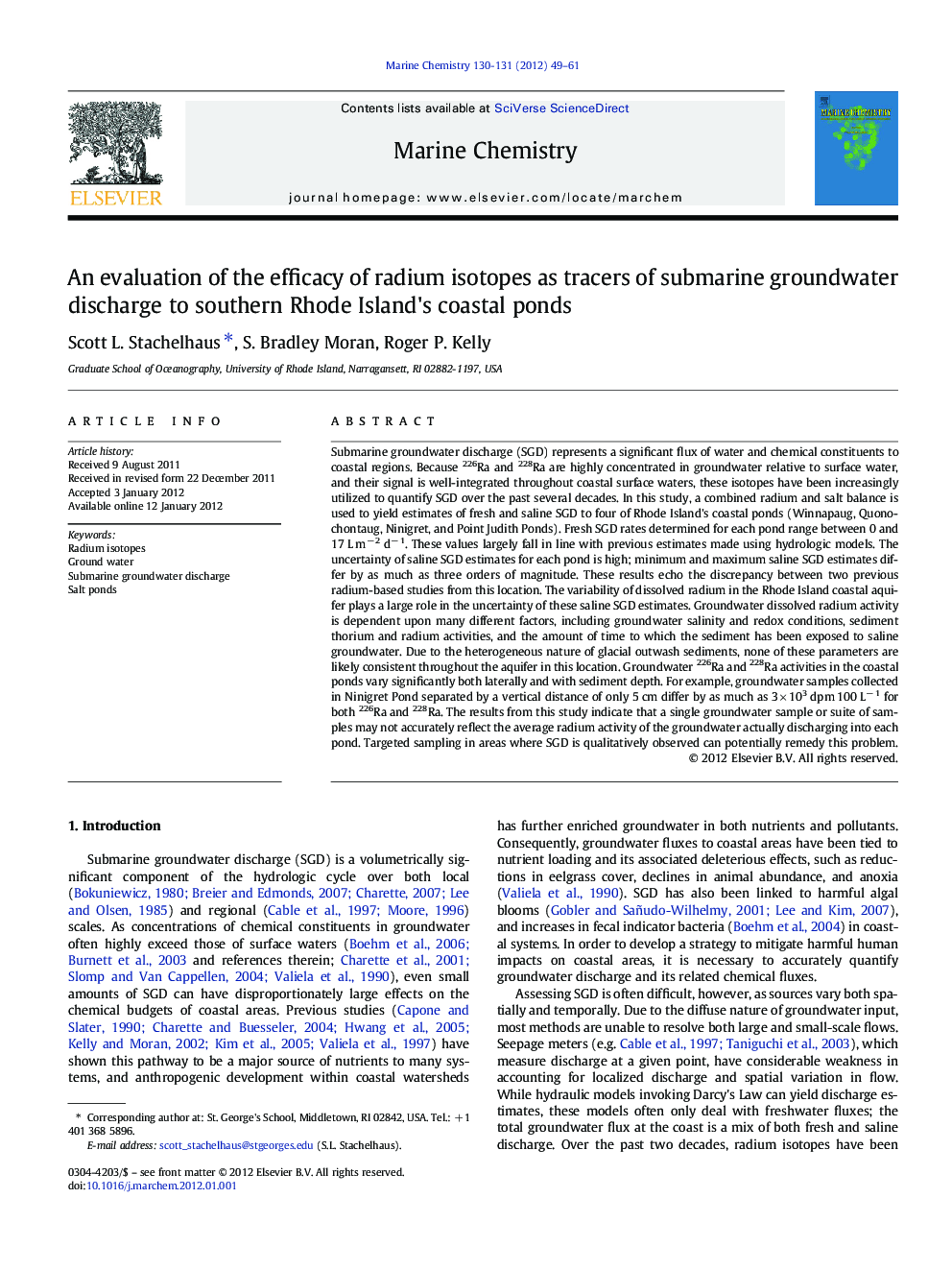| Article ID | Journal | Published Year | Pages | File Type |
|---|---|---|---|---|
| 1263049 | Marine Chemistry | 2012 | 13 Pages |
Submarine groundwater discharge (SGD) represents a significant flux of water and chemical constituents to coastal regions. Because 226Ra and 228Ra are highly concentrated in groundwater relative to surface water, and their signal is well-integrated throughout coastal surface waters, these isotopes have been increasingly utilized to quantify SGD over the past several decades. In this study, a combined radium and salt balance is used to yield estimates of fresh and saline SGD to four of Rhode Island's coastal ponds (Winnapaug, Quonochontaug, Ninigret, and Point Judith Ponds). Fresh SGD rates determined for each pond range between 0 and 17 L m− 2 d− 1. These values largely fall in line with previous estimates made using hydrologic models. The uncertainty of saline SGD estimates for each pond is high; minimum and maximum saline SGD estimates differ by as much as three orders of magnitude. These results echo the discrepancy between two previous radium-based studies from this location. The variability of dissolved radium in the Rhode Island coastal aquifer plays a large role in the uncertainty of these saline SGD estimates. Groundwater dissolved radium activity is dependent upon many different factors, including groundwater salinity and redox conditions, sediment thorium and radium activities, and the amount of time to which the sediment has been exposed to saline groundwater. Due to the heterogeneous nature of glacial outwash sediments, none of these parameters are likely consistent throughout the aquifer in this location. Groundwater 226Ra and 228Ra activities in the coastal ponds vary significantly both laterally and with sediment depth. For example, groundwater samples collected in Ninigret Pond separated by a vertical distance of only 5 cm differ by as much as 3 × 103 dpm 100 L− 1 for both 226Ra and 228Ra. The results from this study indicate that a single groundwater sample or suite of samples may not accurately reflect the average radium activity of the groundwater actually discharging into each pond. Targeted sampling in areas where SGD is qualitatively observed can potentially remedy this problem.
► Salt balance-based fresh SGD values for RI coastal ponds range from 0 to 17 L m− 2 d− 1. ► Ra isotope-based SGD estimates are highly variable in Rhode Island's coastal ponds. ► High uncertainty in SGD values is attributed to variability in groundwater Ra. ► Minimum and maximum groundwater Ra activities differ by as much as 3 × 104 dpm 100 L− 1 ► An average groundwater sample may not accurately represent discharging water.
